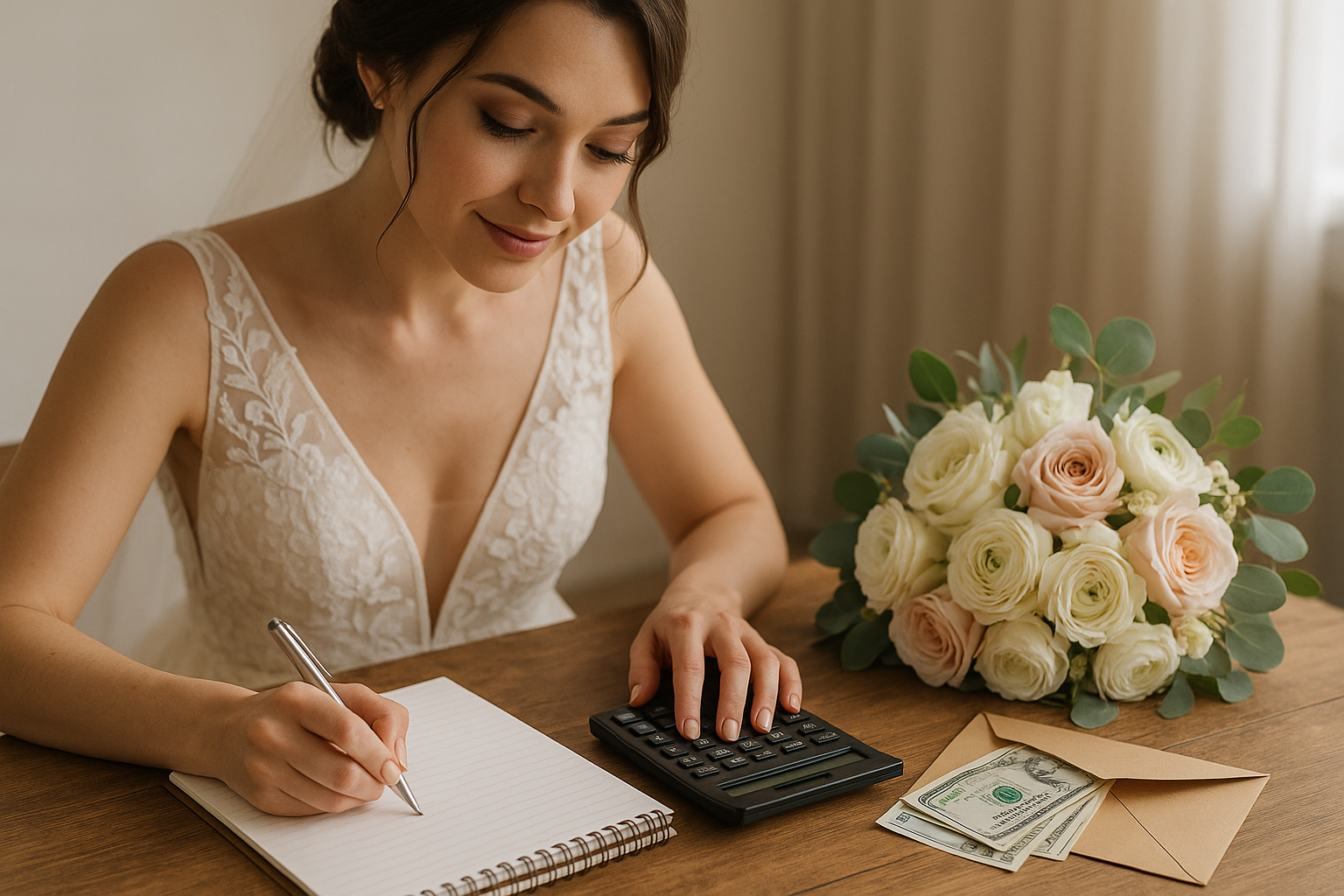How do we set a realistic wedding budget?
Estimated Reading Time:
(7 minutes)
Let me guess—you’re sitting under a wide-brimmed sun hat with Pinterest open in one tab, Excel in the other, sipping something cold while panic-browsing $12,000 wedding arches you didn’t even know existed last week. Been there. And yes, I’m answering your question from the breezy beaches of Aruba, because after 20 years in this business, I’ve learned that a little sunshine and a lot of strategy go a long way when it comes to weddings—especially when we’re talking budgets.
Now, setting a realistic overall wedding budget isn’t about cutting every corner or giving up the things you love. It’s about clarity, smart priorities, and giving every dollar a job before it walks down the aisle.
Let’s break it down.
Step One: Know What You’re Working With
Before you dream up that custom champagne wall or private firework finale, you need to know your financial lane.
Here’s the big question: Who’s contributing?
Sit down with your partner and get real. Will your families be helping? Are you footing the bill yourselves? Is anyone offering to cover a specific area, like the dress or catering?
This is not the time to make assumptions or feel awkward about money. Ask the tough questions early. I’ve seen more wedding stress come from mismatched expectations than from anything else.
Once you know the total pool of money you’re working with—be it $5,000 or $150,000—that’s your anchor. Now we allocate.
Step Two: The 50/30/20 Budgeting Rule—Wedding Edition
There’s no one-size-fits-all formula, but here's a guideline I give my clients to help make decisions:
50% – Venue + Catering:
This usually includes food, alcohol, service fees, and your venue rental. It’s your biggest ticket item for good reason—it’s where your guests eat, toast, and dance the night away.
30% – Everything Else:
Think photography, florals, music, attire, décor, invitations, rentals, and transportation. This bucket flexes depending on your priorities.
20% – Planning, Cushion & Extras:
This includes your wedding planner or coordinator (if you’re hiring one), gratuities, vendor tips, taxes, and a “just in case” fund. Because yes—unexpected costs will show up like an uninvited cousin.
Step Three: Prioritize Like a Pro
Every couple has a different definition of what matters most. I've worked with brides who would skip dinner if it meant hiring their dream photographer—and others who wanted a no-frills photo package so they could put the money into a live string quartet and plated filet mignon.
Ask yourselves:
“What are the 2–3 things we want our guests to remember?”
“What are the 2–3 things we want to remember most?”
Your budget should follow that. Put your money into the experience that matches your values. If you want great photos, spend there. If your dream is a garden ceremony with lush florals, that’s where the investment goes.
Everything else? Simplify.
Step Four: Keep Track Like It’s Your Full-Time Job
Whether you use Google Sheets, a wedding budget app, or a simple notebook, you must track every expense. Include taxes, delivery fees, setup costs, gratuities—everything. I’ve seen couples forget to account for postage, alterations, or audio equipment rentals, and those costs can add up fast.
Also? Label what’s paid, what’s due, and when. You don’t want your final week filled with last-minute invoices and forgotten deposits.
Step Five: Embrace the Pivot
Here’s the truth: You will change your mind about something. You’ll fall in love with a different venue. You’ll find a gown that’s double your dress budget but makes you feel like royalty. It happens.
The key? Rebalance. If you overspend in one category, shave from another. No guilt, no shame. Just adjustments. Your wedding budget isn’t a prison—it’s a plan that should flex with your decisions.
Anecdote from the Aisle
One of my brides, let’s call her Jenna, had her heart set on a designer dress. It was double her original dress budget, but when she tried it on, she cried—and not because of the price tag. She ended up getting it by scaling back on table linens, switching from a plated meal to stations, and making her centerpieces half florals, half candles. No one noticed the linen swap. But every single person noticed how radiant she looked when she walked down the aisle.
That’s a budget done right.
Bonus Tips from a Wedding Pro
- Always add a 10–15% buffer to every estimate. If the quote says $5,000, plan for $5,750.
- Vendors often require non-refundable retainers to book—budget for those early.
- Ask about payment schedules. Some vendors take 50% upfront, others divide payments over time.
- If your guest list grows, so does every cost—meals, tables, chairs, invitations, and even the bar tab.
- Don’t forget gratuities and taxes. They sneak up at the end.
My Advice
Setting a wedding budget isn’t just about numbers. It’s about values. It’s about understanding what matters most to you and your partner—and building your celebration around that. With the right mindset and a little guidance (and maybe a drink in hand), you can plan a stunning, unforgettable wedding that doesn’t leave you starting your marriage in debt.
If you’re feeling overwhelmed, take a breath. You’ve got this. And if you ever need a voice of reason from someone who’s seen it all—I'll be right here, toes in the sand, cocktail in hand, cheering you on.
– Bailey J.
Related Reads You’ll Love:
How to Trim Your Guest List Without Hurting Feelings
Should You Hire a Wedding Planner or Go DIY? Here’s How to Decide

